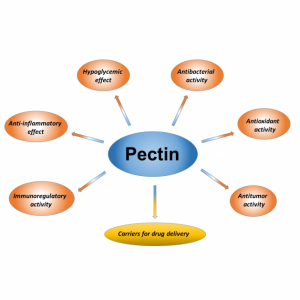What are polyacrylates nanoparticles?
Polyacrylates are an important class of soft, tough and rubbery polymers, which are known for their high transparency, good impact toughness and elasticity. Polyacrylates and their copolymers are one of the polymeric nanoparticles (NPs).
Polymeric nanoparticles are particles within the size range from 1 to 1000 nm and can be loaded with active compounds entrapped within or surface-adsorbed onto the polymeric core. The term “nanoparticle” stands for both nanocapsules and nanospheres, which are distinguished by the morphological structure. Polymeric nanoparticles have shown great potential for targeted delivery of drugs for the treatment of several diseases.
Polymeric nanoparticles have attracted great interest in both academic and industrial fields owing to their potential applications in drug delivery, separation sciences, catalysis, diagnostic imaging, soil remediation, and so on.
Are polymeric nanoparticles toxic?
Biocompatibility, biodegradability and non-toxicity are the main characteristics of polymeric NPs. They are safe for human use and can improve the bioavailability of the loaded drugs. The great importance that is given to these nanocarriers is due to their good stability and the ability to encapsulate a high amount of substances. A recent report has indicated that many biodegradable and non-biodegradable polymeric nanocarriers can be applied for oral drug delivery.
How to obtain polyacrylate nanoparticles?
Polyacrylate nanoparticles can be obtained by addition polymerization of vinyl groups with the molecular structure of monomer. This method has received much attention due to good film-forming property, low cost, controllable size, low toxicity, and ease of synthesis.
Actually, various methods have been used to fabricate polyacrylate nanoparticles, such as the epitope polymerization technique, the supramolecular self-assembly approach, and the spray drying method. Comparatively, the emulsion polymerization is more economical, environment-friendly, and simple.
Polyacrylate particles for your research
CD Bioparticles offers a wide range of monodisperse and porous polyacrylate particles ranging in size from 30 μm to 80 μm. Our DiagPoly™ polyacrylate particles are available with carboxyl, sulfo, DEAE, quaternary amine, phenyl and butyl groups on the particle surface for a variety of applications.
Various polyacrylate particles products are ready for your research use, such as DiagNano™ DEAE Porous Polyacrylate Particles, 80 μm, which are monodisperse, porous polyacrylate (PA) microparticles used for ion exchange chromatography with high loading capacity. These microparticles with DEAE (weak anion exchange, WAX) groups on the surface are suitable for high-load capture and large-scale purification of various biomacromolecules such as antibodies, proteins, and polypeptides. Our partilces have unique long-spaced arm with extremely high load, more than 2 times higher than the traditional IEX media. They are stable in pH 2-12.
References
1. Zielińska, A., Carreiró, F., Oliveira, A. M., Neves, A., Pires, B., Venkatesh, D. N., … & Souto, E. B. (2020). Polymeric nanoparticles: production, characterization, toxicology and ecotoxicology. Molecules, 25(16), 3731.
2. Liu, H., Zhang, G., Lu, L., Chen, Y., Luo, M., Bian, J., … & Wang, L. (2019). Influence of varied fluorine contents on long-term storage stability of polyacrylate nanoparticles and film properties. Journal of Nanomaterials, 2019.




